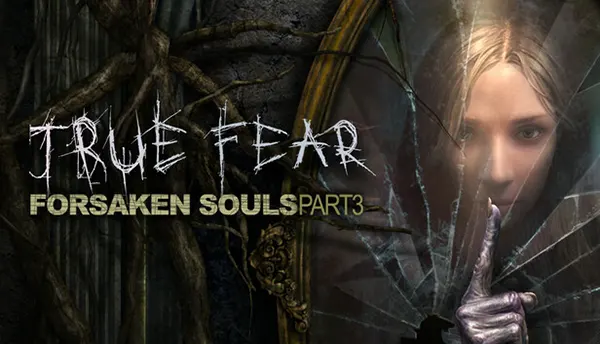
True Fear: Forsaken Souls — a classic point-and-click horror crafted for mobile
True Fear: Forsaken Souls has become one of the most recognisable mobile horror adventures thanks to its grounded storytelling, atmospheric tension and carefully paced progression. The mobile adaptation offers a detailed reconstruction of the original PC release, preserving its investigative structure while refining controls and interface elements specifically for touchscreens. The game blends methodical exploration with narrative depth, encouraging players to follow clues, examine environments and uncover the truth behind a family mystery that unfolds gradually and convincingly.
The structure of gameplay and investigation
The mobile version retains its point-and-click foundation, relying on observation, logic and environmental interaction rather than fast reaction. Players navigate through hand-drawn scenes, collect items, unlock hidden compartments and combine objects to progress through increasingly complex puzzles. Each location has been adapted to work smoothly on smaller screens without compromising visual detail.
The investigative flow revolves around uncovering diary notes, audio clues and environmental fragments connected to the protagonist’s missing sister. These elements are incorporated naturally into the story, supporting a coherent sense of progression rather than acting as filler. This approach gives the narrative weight and creates steady momentum.
Inventory usage is streamlined for mobile, allowing quick access to collected items and reducing unnecessary transitions between menus. This refinement helps maintain immersion and keeps the focus on the mystery rather than on interface navigation.
Atmosphere, pacing and design choices
The game’s tone is shaped by careful sound engineering, controlled use of lighting and subtle environmental animations. These elements support the uneasy mood without resorting to excessive jumpscares. Background rustles, distant echoes and flickering lights provide sensory cues that help build tension gradually.
True Fear: Forsaken Souls relies on slow-burn pacing. Story revelations appear at consistent intervals, giving players enough time to absorb each discovery. The narrative structure avoids rushed twists and instead develops characters and events through documents, flashbacks and symbolic imagery.
Visual design focuses on muted palettes and worn interiors, reinforcing the story’s themes of abandonment and trauma. Locations feel lived-in and coherent, from cluttered basements to deteriorating hallways. This consistency helps maintain the sense of a connected world rather than disconnected scenes.
Technical optimisation and mobile adaptation
The mobile release underwent several optimisation updates across 2023–2025, focusing on stability, load times and support for modern devices. The game now runs smoothly on both mid-range and high-end smartphones, offering stable framerates even in animated scenes. Text clarity and object visibility were refined for high-resolution displays.
Touchscreen navigation is responsive and designed to minimise accidental inputs. Gestures are simple and intuitive: tapping for interaction, swiping for inventory browsing and pinch-zoom for detailed examination. These mechanics make navigation accessible while preserving the deliberate pace typical of point-and-click adventures.
Save slots, cloud syncing and checkpoint placement were refined to reduce progress loss. This is particularly useful for players who engage in short sessions on mobile devices, making the experience more flexible and reliable.
Audio, performance and accessibility
Sound quality was updated for modern mobile hardware, improving clarity of ambient recordings and enhancing directionality. Subtle audio layers become more noticeable with good headphones, reinforcing the tension in quieter scenes.
The developers added optional accessibility settings such as guided hints, adjustable brightness and alternative font sizes. These features make the game more approachable without affecting its investigative nature. Players who prefer a more challenging experience can disable all assistance tools.
Battery consumption has been reduced in recent patches, allowing longer sessions without excessive heat or power drain. This technical stability supports broader device compatibility and ensures that the game remains playable across the expanding mobile market.

Narrative depth and character development
The story centres around Holly, who begins receiving unsettling messages connected to her estranged sister. Her search leads her through abandoned houses, derelict psychiatric facilities and archival records that reveal long-hidden family secrets. Each discovery is grounded in logical progression, avoiding plot jumps that could disrupt immersion.
Character motivations are presented through journal entries, phone messages and environmental storytelling. These details help shape a convincing psychological portrait without relying on melodrama. The narrative tone remains restrained, prioritising emotional realism over sensationalism.
The game explores themes of memory, fear and fractured family relationships, presenting them through subtle dialogue and symbolic scenes. This balance keeps the experience engaging for experienced players while remaining accessible to newcomers who enjoy mystery-driven narratives.
The role of puzzles and story integration
Puzzles are crafted to reflect the environment and the unfolding plot. Locks, coded notes, fragmented documents and machinery mechanisms require logical thinking rather than guesswork. Each challenge contributes to the story’s progression, reinforcing the sense that every solved puzzle uncovers another layer of truth.
The puzzle difficulty curve is well-calibrated, increasing steadily without sudden spikes. Hints remain optional and unobtrusive, allowing players to maintain their preferred pace. This maintains engagement and reduces friction for mobile users.
The combination of investigative puzzles, atmospheric tension and narrative cohesion results in an experience that feels complete and thoughtfully assembled. The game sets a clear standard for mobile point-and-click horror adventures, aligning classic mechanics with modern accessibility.
